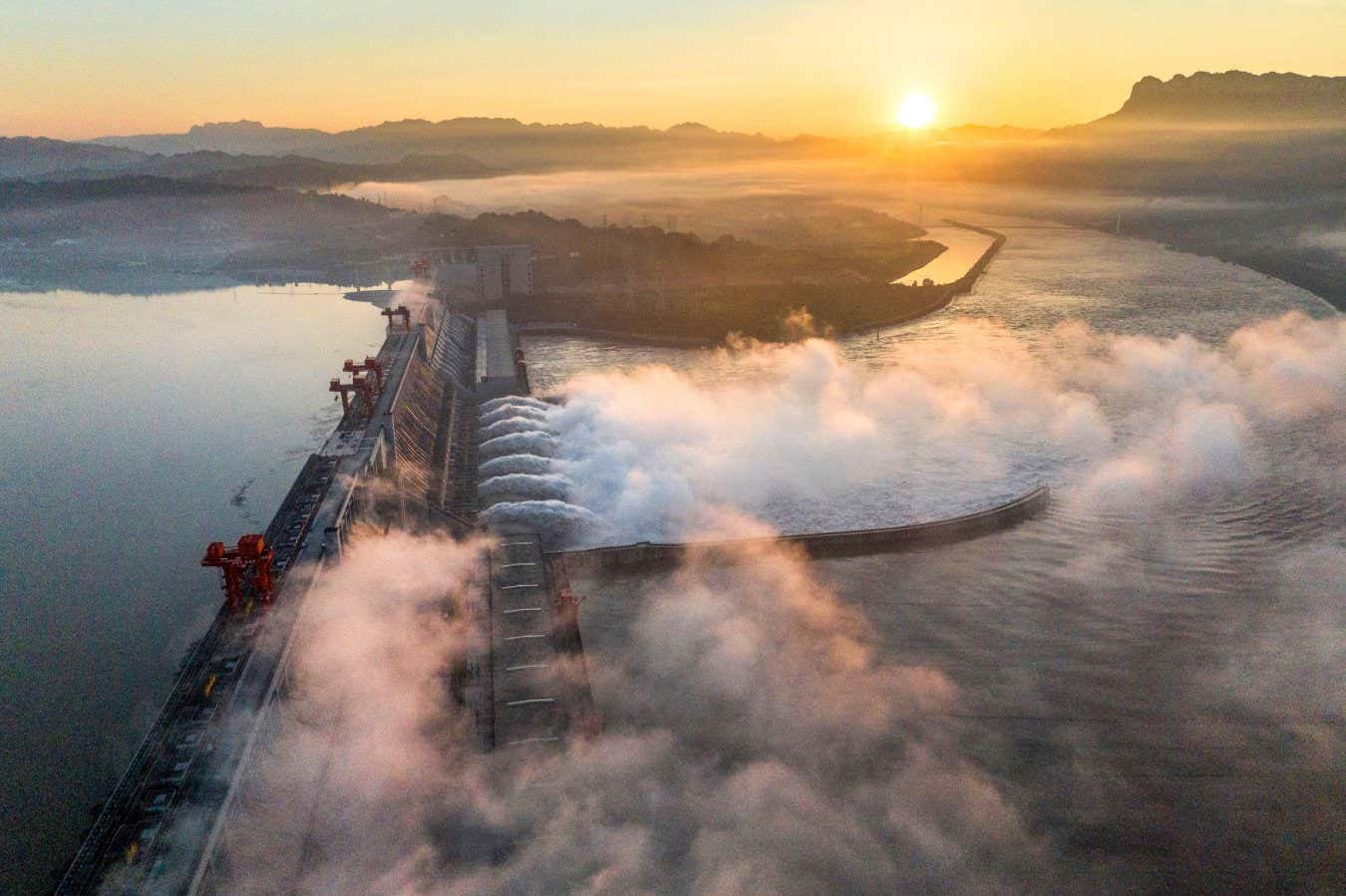As China’s vast electrical grid relies more on wind, solar and hydropower, it faces a growing risk of power shortages due to bad weather – and that could encourage the use of coal plants
By James Dinneen
3 April 2025
The Three Gorges Dam in China is a major source of hydropower
Costfoto/NurPhoto/Shutterstock
China’s vast electrical grid buzzes with more renewable energy than that of any other country, but this system is also becoming more vulnerable to power shortages caused by unfavourable weather. The need to ensure a reliable power supply could push China’s government to use more coal-fired power plants.
China’s energy system is rapidly getting cleaner, with virtually every month setting new records for wind and solar energy generation. The country’s overall greenhouse gas emissions – the world’s highest – are expected to soon peak and begin to decline. Wind, solar and hydropower currently make up about half of China’s power generation capacity, and are expected to increase to almost 90 per cent by 2060, when the country has pledged to reach “carbon neutrality”.
Read more
Chinese nuclear reactor is completely meltdown-proof
Advertisement
This growing reliance on renewable energy also means the country’s power system is increasingly vulnerable to changes in the weather. Intermittent wind and sun can be supplemented by steadier hydropower, produced by huge hydroelectric dams concentrated in southern China. But what happens when a wind and solar slump coincides with a drought?
Jianjian Shen at Dalian University of Technology in China and his colleagues modelled how power generation on the increasingly renewable grid would respond to these “extreme weather” years. They estimated how the country’s current and proposed future mix of wind, solar and hydropower would behave under the least favourable weather conditions seen in the past.
They found that the future grid would be substantially more sensitive to changes in the weather than today. In the worst case weather scenario, power generation could decline by as much as 10 per cent, leading to power shortages. In 2030, a year with the least favourable weather would result in an energy shortage of more than 400 terawatt-hours, nearly 4 per cent of total energy demand. “That’s not a number that anyone can just ignore,” says Li Shuo at the Asia Society Policy Institute in Washington DC.
